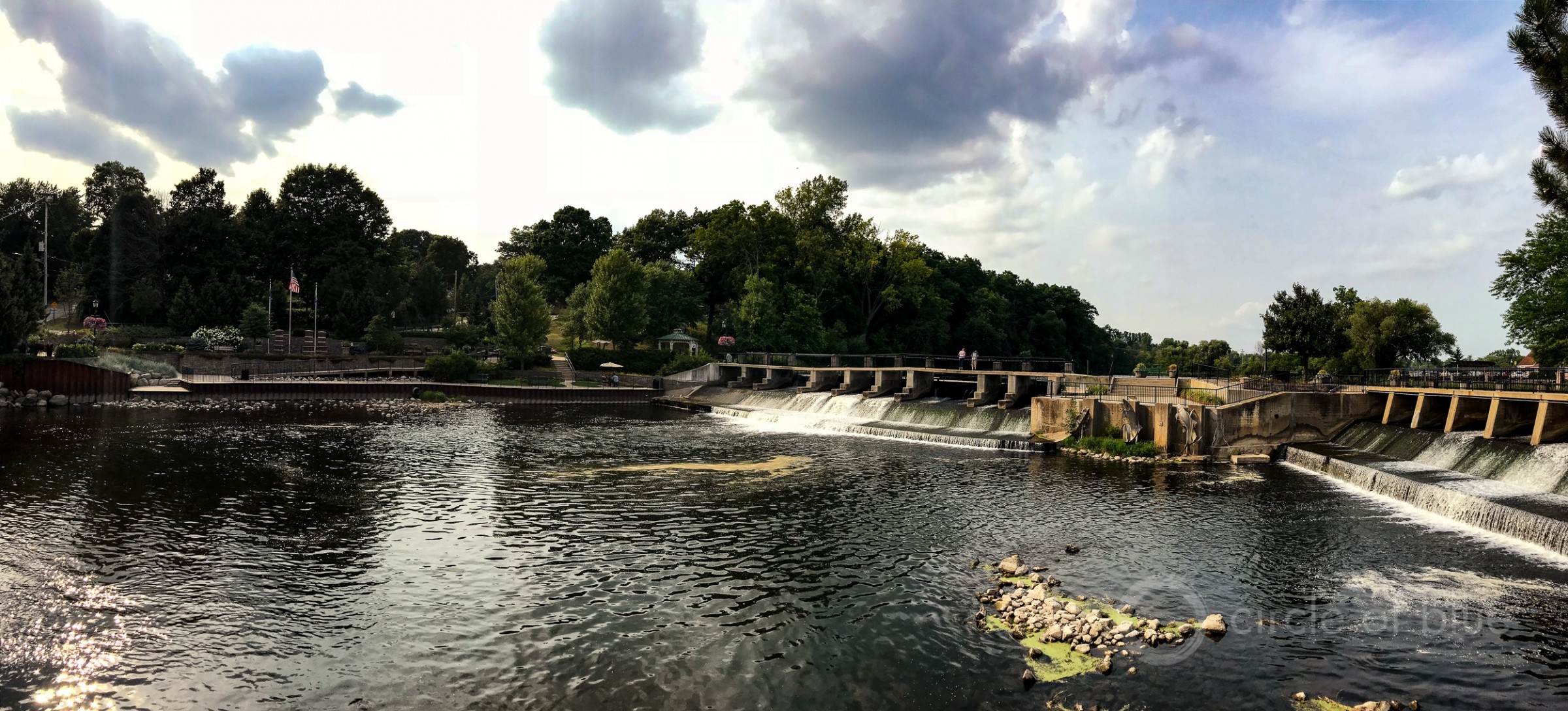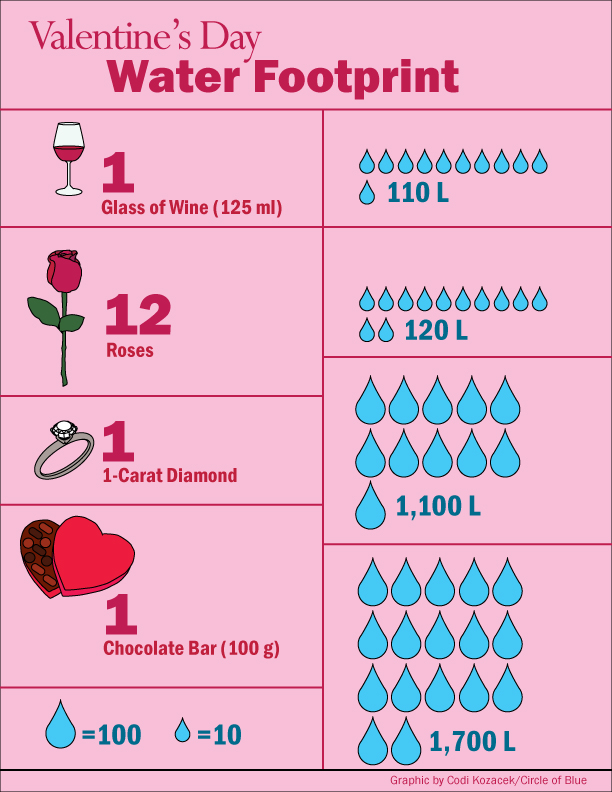As PFAS Lawsuits Proliferate, Legal Tactics Emerge
Individuals, utilities, and states seek monetary compensation for chemical pollution of water supplies.

The Rogue River, which runs through Rockford, Michigan, foams often from PFAS chemicals that are leaching upstream from the former tannery site of Wolverine World Wide, a shoe manufacturer. Individuals in the Rockford area are suing Wolverine for contaminating groundwater as well. Photo © J. Carl Ganter/ Circle of Blue
By Brett Walton, Circle of Blue
Potentially billions of dollars in damages are at stake in more than a hundred lawsuits against chemical companies, manufacturers, the U.S. military, and others for contaminating water supplies with toxic per- and polyfluoroalkyl substances, a class of more than 4,000 man-made chemicals known collectively as PFASs.
The cases include class-action lawsuits in Colorado, Michigan, New York, and Pennsylvania, as well as a nationwide claim, that seek compensation for individuals exposed to the chemicals. Also in the docket are more than a dozen state government and utility lawsuits from Arizona to Florida that are pursuing reimbursement for the cost of environmental cleanup and removing PFAS chemicals from drinking water.
Though the lawsuits target a number of defendants and contamination sources, one is prominent: companies such as 3M, Tyco Fire Products, and Chemguard that manufactured firefighting foams and other products that use PFAS chemicals.
The legal path for the initial stages of many of the lawsuits became clearer this week when the Judicial Panel on Multidistrict Litigation, a body that coordinates procedural matters for similar lawsuits filed in multiple federal courts, ordered to consolidate the pretrial proceedings for 75 lawsuits that involve groundwater contamination from firefighting foams.
The consolidation, which will simplify the discovery and hearing processes and will be heard in the District of South Carolina, was requested by Tyco and Chemguard, two firefighting foam producers named in the lawsuits.
Two high-profile settlements thus far with chemical companies illustrate the financial stakes in these cases. In February, 3M, the main producer of PFOA and PFOS, the most-studied of these chemicals, settled a groundwater pollution lawsuit with the state of Minnesota for $850 million.
A year earlier, in February 2017, DuPont and its spinoff company Chemours agreed to pay residents of Ohio and West Virginia $671 million for PFOA pollution from a manufacturing plant in Parkersburg, West Virginia. That case litigated claims from some 3,500 people.
The cost to utilities is still being worked out.
Jeff Kray, a Seattle-based attorney with Marten Law who is working with three Washington municipalities on PFAS lawsuits, told Circle of Blue that the cost of cleanup is uncertain because regulatory and technical questions regarding long-term utility liabilities have yet to be resolved.
The U.S. Environmental Protection Agency has indicated that it will regulate several PFAS chemicals, but no federal standards currently exist. The EPA has a guideline of 70 parts per trillion for PFOA and PFOS combined, but it is not enforceable. Several states have stepped into the gap by setting their own limits, but most utilities do not know the treatment standards to which they will be held. That makes it difficult to calculate costs.
“How much granular activated carbon will we need to clean the water to seventy parts per trillion or less?” Kray said, posing a question about a common PFAS-removal technology. “Will we have to replace it more frequently? How long are we going to have to do this? What will it take with source removal that we can discontinue treatment in the future? These are questions utilities have to ask to figure out their costs.”
Utilities that have filed lawsuits seeking damages include: West Morgan-East Lawrence Water and Sewer Authority, Alabama; Marana and Tucson, Arizona; Emerald Coast Utilities Authority, Florida; Barnstable and Westfield, Massachusetts; Middlesex Water Company, New Jersey; Newburgh, Suffolk County Water Authority, and Hampton Bays Water District, New York; and Spokane, Washington.
One of the utilities to enter a dollar figure is Westfield, Massachusetts, which is represented by SL Environmental Law Group, a San Francisco-based firm. Westfield entered a preliminary claim of $47 million for responding to groundwater contamination from firefighting foams used at Westfield-Barnes Regional Airport, according to Richard Head, who is representing Westfield. The city shuttered two of its eight wells because of contamination and a third is being used in emergencies only.
With a population of about 41,000, Westfield is not a large city. Head expects that communities of similar size will have comparable costs for PFAS cleanup and water treatment, in the $5 million to $60 million range.
Fairbanks, Alaska, which has retained SL Environmental lawyers but has not yet filed a lawsuit, says that it has spent $4 million to excavate contaminated soil at the Regional Fire Training Center, test groundwater, and connect residents with contaminated wells to city water. Fairbanks, like many cities in states without regulatory standards, is using the EPA guidelines to determine which homes qualify for a city water connection.
Newburgh, New York, stopped using Washington Lake as its water source because of PFAS contamination. Newburgh is now purchasing water from New York City’s Catskill Aqueduct at a cost of roughly $170,000 per month. The state is reimbursing those costs for now, but Newburgh argues that it will need to purchase water indefinitely unless local sources are purged of PFAS. If the state stops reimbursements, Newburgh water rates would rise 45 percent, the city claims in its lawsuit against the Defense Department, 3M, and others.
3M declined to respond to questions from Circle of Blue about the lawsuits, and Tyco did not respond to a request for comment.
In these suits, water utilities have a different burden of proof than individuals, says Head. Individuals must prove a connection to illness or disease, Head said. Utilities are responding to government regulations, in which action is often required.
“A water system is under regulatory requirements: the system has to take action relative to that contaminant,” Head told Circle of Blue. “A water system does not have to prove in court an illness because it has a regulatory limit to meet. A regulatory decision has already been made that it is a risk to health.”
“The burden of proof isn’t there for utilities as it is for homeowners,” Head added.
Most of the cases have been product liability cases, which holds companies responsible for the products they create, when those products are used in the manner intended.
Head, when he was New Hampshire’s associate attorney general, helped prosecute a similar product liability case against ExxonMobil. The oil giant paid $236 million to the state for groundwater contamination linked to MTBE, a gasoline additive.
Kray sees regulatory uncertainty around PFAS chemicals as a barrier to additional legal action. If the EPA lists PFAS chemicals as hazardous substances under federal environmental laws, then more lawsuits would be likely, he said.
Brett writes about agriculture, energy, infrastructure, and the politics and economics of water in the United States. He also writes the Federal Water Tap, Circle of Blue’s weekly digest of U.S. government water news. He is the winner of two Society of Environmental Journalists reporting awards, one of the top honors in American environmental journalism: first place for explanatory reporting for a series on septic system pollution in the United States(2016) and third place for beat reporting in a small market (2014). He received the Sierra Club’s Distinguished Service Award in 2018. Brett lives in Seattle, where he hikes the mountains and bakes pies. Contact Brett Walton












Industrial “self-regulation” says Reaganites and Libertarian, when Dark Waters (movie) says Dupont knew PFOAs were toxic since 1962.
The political machinery says we, the public, have lost faith in our governmental institutions and I wonder what took the public so long?